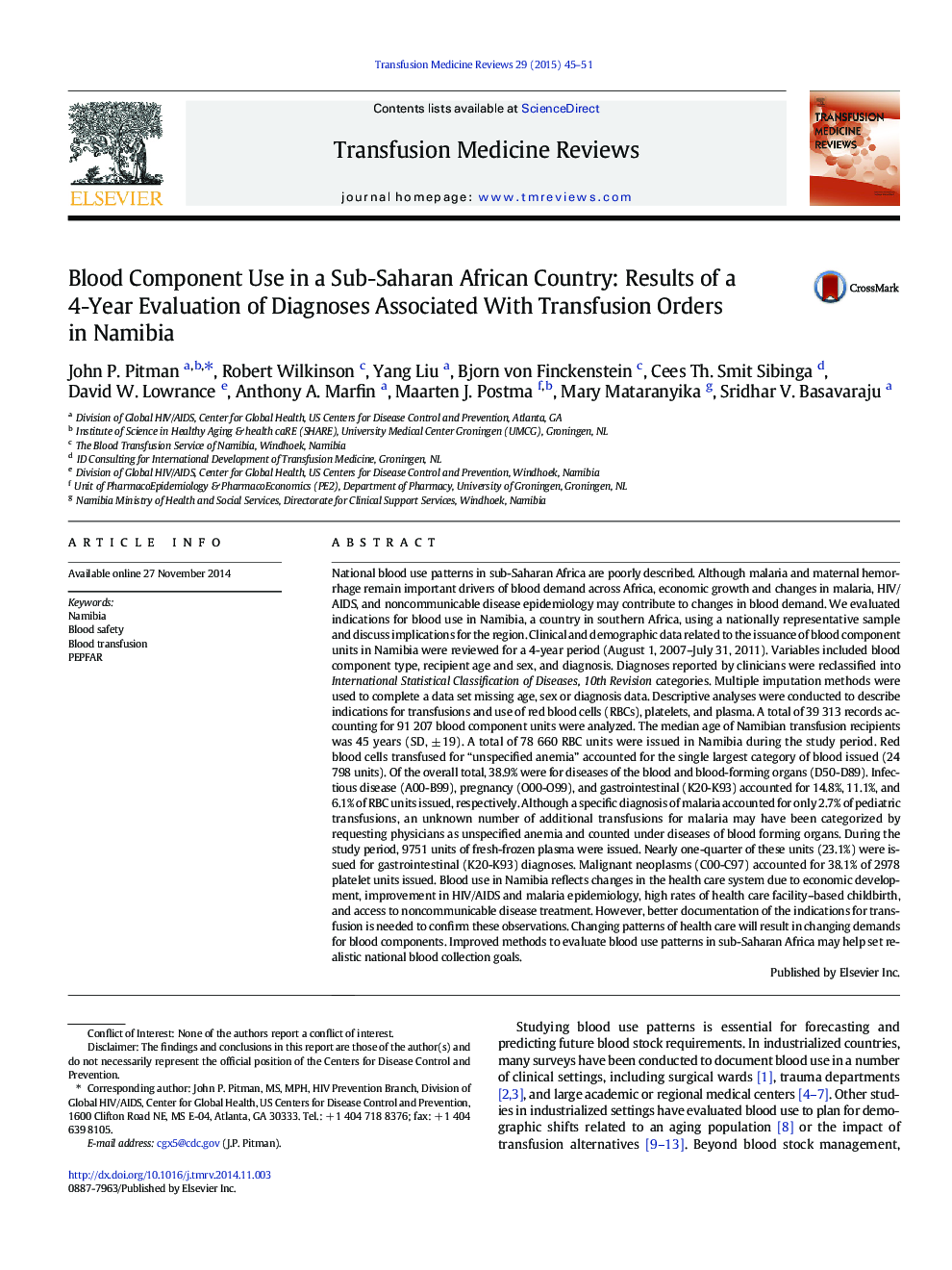| کد مقاله | کد نشریه | سال انتشار | مقاله انگلیسی | نسخه تمام متن |
|---|---|---|---|---|
| 3336647 | 1213618 | 2015 | 7 صفحه PDF | دانلود رایگان |
National blood use patterns in sub-Saharan Africa are poorly described. Although malaria and maternal hemorrhage remain important drivers of blood demand across Africa, economic growth and changes in malaria, HIV/AIDS, and noncommunicable disease epidemiology may contribute to changes in blood demand. We evaluated indications for blood use in Namibia, a country in southern Africa, using a nationally representative sample and discuss implications for the region. Clinical and demographic data related to the issuance of blood component units in Namibia were reviewed for a 4-year period (August 1, 2007–July 31, 2011). Variables included blood component type, recipient age and sex, and diagnosis. Diagnoses reported by clinicians were reclassified into International Statistical Classification of Diseases, 10th Revision categories. Multiple imputation methods were used to complete a data set missing age, sex or diagnosis data. Descriptive analyses were conducted to describe indications for transfusions and use of red blood cells (RBCs), platelets, and plasma. A total of 39 313 records accounting for 91 207 blood component units were analyzed. The median age of Namibian transfusion recipients was 45 years (SD, ± 19). A total of 78 660 RBC units were issued in Namibia during the study period. Red blood cells transfused for “unspecified anemia” accounted for the single largest category of blood issued (24 798 units). Of the overall total, 38.9% were for diseases of the blood and blood-forming organs (D50-D89). Infectious disease (A00-B99), pregnancy (O00-O99), and gastrointestinal (K20-K93) accounted for 14.8%, 11.1%, and 6.1% of RBC units issued, respectively. Although a specific diagnosis of malaria accounted for only 2.7% of pediatric transfusions, an unknown number of additional transfusions for malaria may have been categorized by requesting physicians as unspecified anemia and counted under diseases of blood forming organs. During the study period, 9751 units of fresh-frozen plasma were issued. Nearly one-quarter of these units (23.1%) were issued for gastrointestinal (K20-K93) diagnoses. Malignant neoplasms (C00-C97) accounted for 38.1% of 2978 platelet units issued. Blood use in Namibia reflects changes in the health care system due to economic development, improvement in HIV/AIDS and malaria epidemiology, high rates of health care facility–based childbirth, and access to noncommunicable disease treatment. However, better documentation of the indications for transfusion is needed to confirm these observations. Changing patterns of health care will result in changing demands for blood components. Improved methods to evaluate blood use patterns in sub-Saharan Africa may help set realistic national blood collection goals.
Journal: Transfusion Medicine Reviews - Volume 29, Issue 1, January 2015, Pages 45–51
